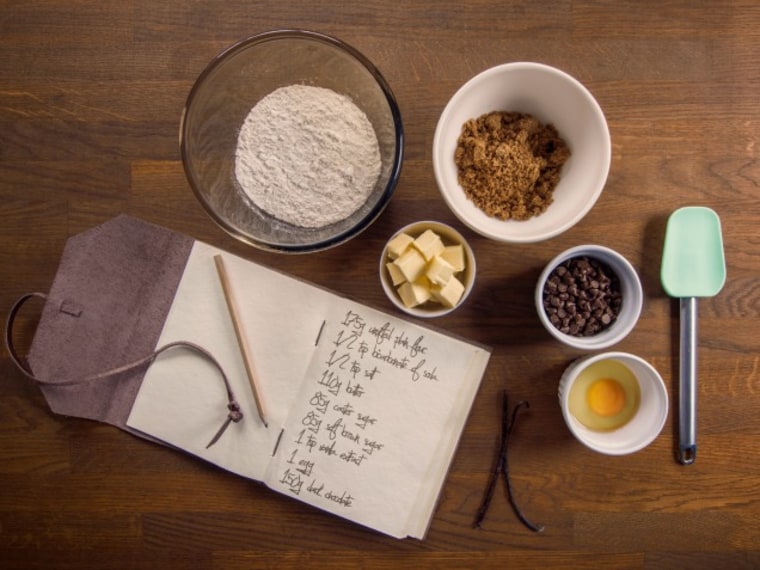Flour, sugar, butter, eggs...sure, when it comes to baking, you're familiar with the standard building blocks (and you've probably already got them in your fridge and cupboard). But these five easy ingredient upgrades can make even your old favorite baked goods better—and healthier.
Whole wheat pastry flour
Give your bag of all-purpose a break! Whole wheat pastry flour (sometimes known as Graham Flour) is a healthier alternative: It's milled from low-protein soft wheat, and has more protein and fiber than the regular old white stuff. If your recipe calls for all-purpose flour, you can substitute up to half of the called-for amount with whole wheat pastry flour. It's softer and more finely-textured than regular whole wheat flour, and baked goods made with it will have a similar consistency to those made with regular white flour. Nutty and earthy, it's best suited for savory recipes, and recipes that have a warm spice profile—think pumpkin pie crusts—than lighter sweets.
Turbinado sugar
Sometimes called raw sugar, turbinado sugar is minimally processed, less refined sugar that comes from sugar cane. It gets its name from the method used to make it: the sugar is spun in a turbine. While it looks a bit like brown sugar, because of its light brown color, it has chunky crystals and it doesn’t contain molasses. It can be used as a replacement for brown sugar, but using it in place of regular white granulated sugar may require the reduction of other wet ingredients, because turbinado contains more moisture. It caramelizes well, so sprinkle it on top of baked goods like crème brulee or use it in the topping of a fruit crisp.
Cocoa powder
Cocoa powder, a common ingredient in brownies or chocolate cakes, is made by extracting most of the cocoa butter from roasted, ground cocoa beans. It’s not a surprising ingredient in and of itself, but there is a bit of mystery in the difference between natural and Dutch-processed versions. Here's the deal: When the pressed cocoa beans are first ground, the result is natural cocoa powder. Recipes that call for natural cocoa powder generally include baking soda (which is alkali) in recipes.
Dutch-process cocoa powder has been further processed—treated with an alkali—to have its acidity neutralized, and is often darker and sometimes mellower in flavor. Because it's neutral it won't react with baking soda, it's usually used in recipes calling for baking powder. In many recipes it's okay to substitute natural cocoa powder for Dutch-process, but you can’t substitute Dutch-process for natural. (And if your recipe just lists plain "cocoa powder" either should work fine!)
Vanilla beans
When vanilla is the star of a recipe, not just a supporting ingredient (as it is in chocolate chunk cookies and French toast casseroles, for example), splurging for real, whole vanilla beans makes a huge difference. Madagascar vanilla beans are pricy, true, but the richness and depth of flavor is noticeable. Look for beans that are soft and pliable, and try to find moist, plump vanilla beans that have a bit of glossiness to the pods. If you're steeping the whole pod in milk to make a pudding, for instance, scrape out the seeds (where most of the vanilla flavor is) and discard the pods before continuing with the recipe. As a general rule of thumb, if you want to substitute vanilla beans for extract, substitute the seeds from one pod for one teaspoon of extract.
Citrus zest
Citrus zest is a heroic everyday ingredient that can transform baked goods into something special. Play with the difference between lemon, lime and orange—and jsut make sure you wash all fruit well before you zest it, as the outside of citrus is often treated with pesticides, and don’t zest the fruit beneath the brightly colored outer layer, as the white pith underneath is quite bitter. Whenever a recipe calls for citrus juice, elevate the fresh flavor with a teaspoon or so of the zest of that same fruit. Berry and other fruit desserts like crostadas or crisps often benefit from a burst of citrus juice or zest, as do things like homemade granola, muffins and quick breads, cakes and sweet rolls. You can even use citrus zest in savory baked items, such as a rosemary lemon foccacia, for an unexpected lift. (Find out how to get all of the zest from your grater here.)
A version of this story originally appeared on iVillage.
